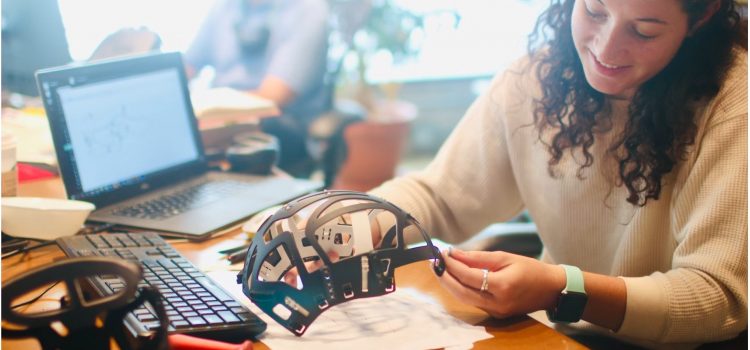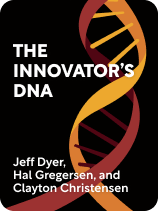

This article is an excerpt from the Shortform book guide to "The Innovator’s DNA" by Jeff Dyer, Hal Gregersen, and Clayton Christensen. Shortform has the world's best summaries and analyses of books you should be reading.
Like this article? Sign up for a free trial here.
What’s the relationship between experimentation and innovation? Why is it useful to take things apart? How can you figure out what will work in the future?
In The Innovator’s DNA, Hal Gregersen, Jeff Dyer, and Clayton Christensen describe five behaviors and skills—what they call Discovery Skills—that are most likely to generate creative ideas. One of these is experimentation.
Read more to understand how experimentation in business is critical for innovation and to learn four ways to experiment with new ideas.
Experimentation and Innovation
One of the five Discovery Skills is experimentation. The authors discuss the connection between business experimentation and innovation, explaining that experimenting with potential solutions to business problems leads to new business ideas. When innovators take things apart and test their ideas with prototypes and pilot projects, they discover new possibilities for products and services. In essence, experimenting is searching for answers to your Defining Questions—it’s best for gathering data about ideas that might work in the future, while the Discovery Skills of questioning, observing, and idea networking provide data about the present and the past.
The authors highlight Jeff Bezos, the founder of Amazon, as an innovator who uses experimentation to drive creativity and success. He embraces risk-taking and experimenting with new ideas, even if they initially seem unconventional or unlikely to succeed. The company itself was an experiment that Bezos conducted to test what products people would buy online. Amazon expanded exponentially by testing the limits of online retailer markets. Today, it continues to experiment with launching new products and services, such as Kindle, which are often met with initial skepticism but later became major contributors to the company’s success.
(Shortform note: Bezos’s propensity for experimentation fits within the character profile of successful business leaders Collins and Hansen outline in Great By Choice. Their research shows leaders of successful companies are generally devoted to their long-term goals and take actions based on experimentation and observations. However, based on their research, Collin and Hansen argue that risk-taking (one of Bezos’ other primary characteristics) is not required for business leaders’ success—you can take careful and calculated action based on your experimentation and observations.)
Techniques for Experimenting With Business Ideas
Keep an open mind. Fearlessly entertain new ideas, hold off on drawing premature conclusions, and test hypotheses as you go. As you do so, it’s important to remain open to being proven wrong and to plan for failed experiments—you’ll gather invaluable information no matter the outcome.
(Shortform note: Keeping an open mind is crucial for everyone who experiments. In Think Like a Rocket Scientist, Ozan Varol explains that scientists, the ultimate experimenters, benefit from keeping open minds because then they can consider all possible outcomes and hypotheses, even those that may seem unlikely or counterintuitive. In this way, they avoid confirmation bias and remain objective as they interpret results, leading to discoveries, breakthroughs, and more accurate and reliable conclusions.)
Take things apart. Disassemble a product, map out processes, or deconstruct an idea. Taking things apart provides opportunities for new insights, ideas, and questions about how things might work better.
(Shortform note: The hands-on approach of taking things apart can be beneficial if you are a visual or kinesthetic learner. Visual learners benefit from seeing how things work by taking objects apart, allowing them to create mental images that help with understanding and retention. Kinesthetic learners benefit from the physical activity of taking objects apart, as using their hands reinforces their understanding and memory and helps them develop problem-solving and critical thinking skills.)
Experiment with ideas by building prototypes. Find something you would like to improve and ask yourself what it would look like if you changed it. Then, construct a prototype by hand, in digital design, or using 3D printing.
Test your ideas with pilot projects. Pilot new services and products by launching new ventures before they’re perfect. Don’t be afraid to fail—you don’t have to have it exactly right on the first try. In fact, the authors emphasize that successful products and companies rarely get it right the first time. Launch, learn from the market response, modify, and relaunch.
| How To Make Prototypes and Test Your New Ideas The authors don’t offer explicit details about building prototypes or launching pilot projects, but in Inspired, Marty Cagan elaborates on prototypes and different ways to test product ideas. Although he focuses on product development, you can also experiment with applying these ideas to new services and process ideas. Cagan outlines four kinds of prototypes—feasibility, user experience, live-data, and hybrid—each appropriate for different testing stages and products. After developing prototypes, he recommends conducting tests, like launching pilot projects, as they can help you assess the four risks to product success: value, usability, feasibility, and business viability. You can perform several kinds of tests to assess each of these risks, including allowing users to interact with prototypes and give you feedback about their experiences with the product. |

———End of Preview———
Like what you just read? Read the rest of the world's best book summary and analysis of Jeff Dyer, Hal Gregersen, and Clayton Christensen's "The Innovator’s DNA" at Shortform.
Here's what you'll find in our full The Innovator’s DNA summary:
- The five key skills that are shared by the world's innovation leaders
- Why innovation in business is so important
- How to sustain innovative organizations and teams long term






